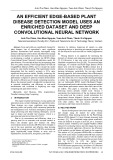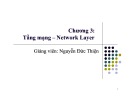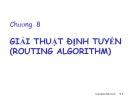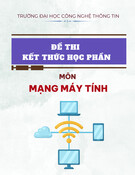
10/ 14/ 2012
1
CAN
Controller
Area Network

10/ 14/ 2012
2

10/ 14/ 2012
3
Gesellschaft mit beschränkter Haftung (abbreviated GmbH (m ost com m on),
GesmbH or Ges.m.b.H.), Germ an for "company wit h limited liabilit y"
Carrier Sense M ultiple Access (CSM A) is a pr obabilistic Media Access Control (M AC) protocol in w hich a node
verif ies t he absence of other traffic before transmit t ing on a shared transmission medium
CAN uses a nondestructive bitw ise arbit ration, which means that messages r emain intact after arbitration is
completed even if collisions are det ect ed. All the arbit ration takes place without cor ruption or delay of t he
message t hat w ins the arbitrat ion.

10/ 14/ 2012
4
CAN Standards
CAN ISO Standardization:
– ISO PRF 16845 : CAN Conformance Test Plan
– ISO PRF 11898-1: CAN Transfer Layer
– ISO PRF 11898-2: CAN High Speed Physical Layer
– ISO DIS 11898-3: CAN Fault Tolerant Physical Layer
– ISO DIS 11898-4: TTCAN Time Triggered CAN
The Layered ISO 11898:1993 Standard Architecture
CAN bus Cables and Connectors
Bus speed Cable type Cable
resistance/ m Terminator Bus Length
50 kbit / s at 1000 m 0.75 ...0.8 m m2
AWG18 70 m Ohm 150 ... 300 Ohm 600 .. 1000 m
100 kbit / s at 500 m 0.5 ... 0.6 mm 2
AWG20 < 60 mOhm 150 ... 300 Ohm 300 ... 600 m
500 kbit / s at 100 m 0.34 ...0.6 m m2
AWG22, AW G20 < 40 mOhm 127 Ohm 40 ... 300 m
1000 kbit / s at 40 m 0.25 ...0.34 mm2
AWG23, AW G22 < 26 mOhm 124 Ohm 0 ... 40 m
Pin Descri
pt ion Colour
1V- Black
2CAN_L Red
3CAN_H Green
4V+ Yellow
Pin Descript ion Colour
1nc -
2V- Black
3CAN_L Red
4 CAN_H Green
5 V+ Yellow
6 nc -
Pin Descript ion Color
1Drain Bare
2V+ Red
3V- Black
4CAN_H Whit e
5CAN_L Blue

10/ 14/ 2012
5
Unshielded tw isted pairShielded t w isted pair
Pin Signal Descript ion
1 - Reserved
2 CAN_L CAN_L bus line dom inant low
3 CAN_GND CAN Ground
4 - Reserved
5 (CAN_SHLD) Optional CAN Shield
6 GND Optional Ground
7 CAN_H CAN_H bus line dom inant high
8 - Reserved
9 (CAN_V+) Optional CAN external supply
CAN bus Cables and
Connectors
ISO11898 NOM INAL BUS LEVELS














![Đề thi học kì 2 môn Nhập môn Mạng máy tính [kèm đáp án]](https://cdn.tailieu.vn/images/document/thumbnail/2025/20251014/lakim0906/135x160/23811760416180.jpg)



![Câu hỏi trắc nghiệm Mạng máy tính: Tổng hợp [mới nhất]](https://cdn.tailieu.vn/images/document/thumbnail/2025/20251001/kimphuong1001/135x160/15231759305303.jpg)
![Câu hỏi ôn tập An toàn mạng môn học: Tổng hợp [mới nhất]](https://cdn.tailieu.vn/images/document/thumbnail/2025/20250919/kimphuong1001/135x160/30511758269273.jpg)






